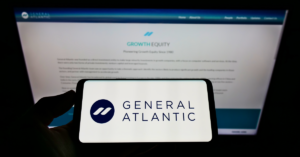India witnessed a record high of 10.7 Mn new Demat accounts created between the period of April 2020 and January 2021. But the lack of specialised knowledge still keeps the majority away from investing
StockGro, a social virtual trading platform with social competitions, helps users learn the business of stock trading with virtual money
The startup initially adopted an offline marketing strategy and created a buzz around its offerings by reaching out to B-school students and organising competitions
Money-making is serious business, so they say. Especially during the pandemic when Covid-19 has cast a deep shadow on the world economy and India is no exception. The sharp drop in the country’s GDP in FY21, hitting an 11-year low at 4.2%, the spike in unemployment to 10.3% in October-December 2020 and the low-interest regime had Indians scurrying for a more lucrative source of wealth creation. And what could be better than the stock markets that have seen a stellar performance all along since its initial Covid crash in March 2020.
The lay investor might have been awed as benchmark indices S&P, BSE, Sensex and NSE Nifty50 more than doubled in January 2021, while most other economic indicators remained weak. Further, the number of new Demat (dematerialised) accounts created saw a record high of 10.7 Mn between the period between April 2020 and January 2021. But here is the catch. In India, only 3.7% of the population is involved in equity investment, according to stock depository data, compared to 55.9% in the US.
The reason?
“One of the biggest reasons is that both our education system and families value saving money over investing,” says Ajay Lakhotia whose social simulation app StockGro has gamified the real-life stock market to help users experience what it’s like to trade in real-time.
But a risk-averse mindset may not be the only reason behind the abysmally low participation. Of course, the millennials and Gen Z know the importance of financial literacy and are keen on DIY wealth creation solutions. But the nitty-gritty of a highly volatile capital market often puts them off, think experts.
“That is why we have undertaken the mission to help them become investment-ready through StockGro,” adds Lakhotia.
Gamification also means potential investors need not learn things the hard way (by losing real money in the market) and experiment with all things stock in a zero-risk environment. Users can download and explore StockGro to learn complex concepts and investment strategies as they invest virtual cash to trade and set up a virtual portfolio using real-world data.
The gamified ‘stocks’ mimic their real-life counterparts, and users gain or lose their virtual money accordingly. Users can take part in daily/weekly/monthly contests to hone their newly acquired skills, and the highest-gaining portfolios in competitions win reward money to take home.
The company has also added a social component to the gaming platform, helping users to connect with each other, join a group to discuss the latest trends in the stock market or chat with market analysts (who are StockGro consultants) for expert advice on creating high-yielding portfolios.
There are quite a few apps on stock market education such as Zerodha Varsity and Groww Personal Finance, and similar Social Trading apps, for that matter, but StockGro’s user base seems to have grown phenomenally. Last month, the startup announced that it had acquired 5 Mn users just 15 months after its launch in July 2020. But there was a well-laid-out strategy behind that achievement.
StockGro’s Journey To 5 Mn Users
Before setting up StockGro, Lakhotia had been a capital market investor for 12 years. But after he quit as a partner of Fosun RZ Capital — a Southeast Asian investment conglomerate — in 2018, he was keen to build an equity-focussed venture to help regular people invest in stocks. During his research, he wondered if the social circle could play an active role in growing one’s interest in the stock market and thought of a simulation-based social app to build investment literacy and confidence with money.
Stockgro was started as an invite-only platform and acquired 400 users in the first week of its launch. However, the key pillars of the niche startup — a stock market knowledge game targeting young people and an engagement-driven community of stock market enthusiasts — called for a different approach away from Google and Facebook marketing.
Lakhotia took a bold step. Marketing was done offline as the company reached out to business schools across the country. Students were invited to participate in intra-school and inter-school competitions held on the platform every week, and winners received cash rewards for building the best performing portfolios. In its latest competition called ASPIRE ’21 held in September, the company awarded INR 5 Lakh in prize money to B-School Students.
These competitions created a buzz around StockGro. By December 2020, the company acquired more than 100K users and expanded its reach to 250 B-schools. But the entry to the platform was still by invitation.
Realising that it was the right time to scale up, the StockGro app was launched on Google Play Store last December and crossed the 1 Mn user mark in March this year.
To build a bigger user base faster and add new ‘engagement’ features to the platform, the startup raised $5 Mn in a Pre-Series A round (led by Root Ventures and Velo Partners). The money was utilised to push brand awareness, and the first commercial titled ‘Bina Practice ke Kudoge to Dooboge Hi’ was aired on Hotstar in September during the IPL matches. It also started a string of memes on social media channels to attract millennial audiences.
Unlike many other businesses, StockGro’s user acquisition blitzkrieg did not backfire. The company claims that the gamified platform has managed a month-on-month retention rate of more than 80%.
“Social trading is a new concept, and we knew that initial adoption and stickiness would be critical for us. Through our business school approach, we could lock a very receptive audience and find the right product-market fit. Our initial users have become our brand ambassadors and helped increase organic user acquisition for the platform,” says Lakhotia.
Of Challenges And Targets
Building a successful community-driven platform is difficult, and building it around a niche and complex domain like the stock market is harder still. So, it is not surprising that Lakhotia, who did not come from a product or tech background, faced scepticism from investors before launching StockGro. But the founder did not doubt the concept’s potential and built the platform with the help of a small UI/UX team through January and February 2020.
The company did not make its first hiring till March that year. But shortly afterwards, nationwide lockdowns were imposed to contain the pandemic, and Lakhotia found it challenging to raise capital or acquire talent. But the uncertain beginning did not dissuade him. He turned it into an invite-only platform to reduce the need for a bigger employee base or a high capital inflow.
Deciding on the revenue model was another key criterion. A gamified and community-driven learning platform could not initially opt for a subscription model without damaging its user acquisition funnel, which was already on a short lease. Therefore, StockGro has adopted a freemium model and gives users 10 Lakh worth of StockGro Cash — the platform’s virtual currency — charging users on in-app instances to build a portfolio and participate in its daily competitions.
Expanding to multiple revenue channels, StockGro expects to cross a $60 Mn revenue run rate by the end of FY22, growing at more than 30% MoM. Lakhotia has also told Inc42 that the company is in talks with multiple stakeholders to develop a number of revenue streams by adding more edtech elements as well as launching in other markets and adding asset classes.
As part of its revenue plans, StockGro partnered with a CA institute in September to launch a series of webinars featuring stock market experts and saw the participation of more than 2 Lakh viewers keen to learn investment strategies. Lakhotia says that he wants to invest heavily in webinars in the future. It will also add regional languages to the platform to ensure deeper product penetration to drive growth.
The company intends to expand its offerings by adding other asset classes, including commodities, bonds, forex trading and futures and options. And by the end of FY22, StockGro plans to launch its platform globally, starting with South East Asia. The startup hopes to double its user base to 10 Mn before March 2022 through these initiatives, empowering all who deeply desire to learn the nuances of the stock market and earn financial independence.


![Read more about the article [App Friday] This digital calendar helps sync up your family schedule, sports events, and public holidays all in one place](https://blog.digitalsevaa.com/wp-content/uploads/2022/01/Imager54n-1643289733240-300x150.jpg)







